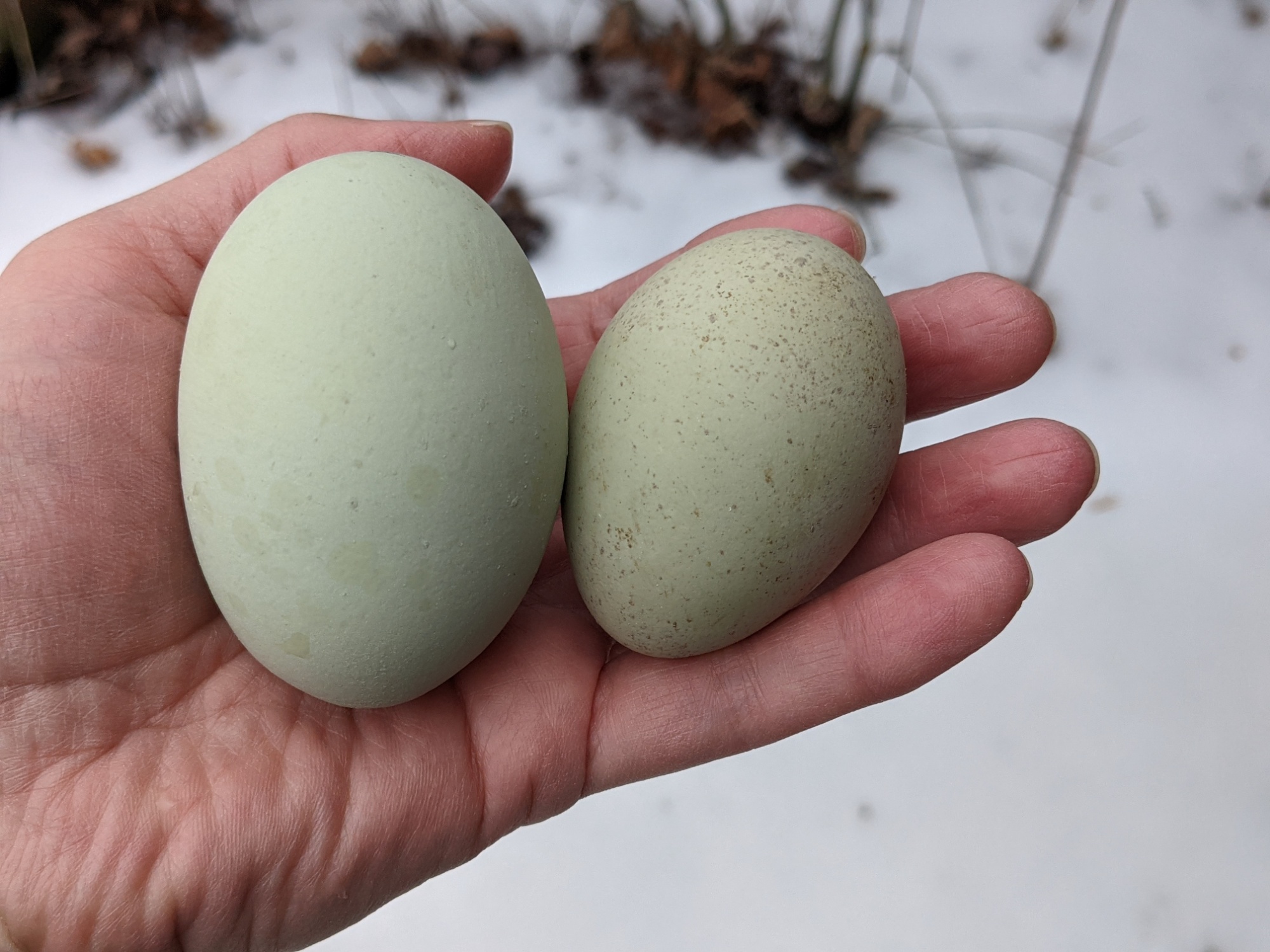
This season’s first hatch is underway with a well-positioned external pip on a French Black Copper Marans egg from our own flock. With luck, the wonderful sound of cheeping should fill the air very soon!
As I’ve previously mentioned, incubation is a lesson in patience. I’ve been hatching eggs – both shipped and local (including from my own flocks) – for more than a few years now, and I have learned a few lessons…including that a hatch progresses at its own pace, and that judicious intervention should only occur as a last resort. It’s sorely tempting for a newbie hatcher to be overeager and help more than is needed or prematurely – and I’ve done both.
With this hatch, I’m focused primarily on monitoring the hatcher temperature and humidity. With very dark eggs like these, I prefer to wait until I see an external pip before I raise the humidity significantly; I’ve found that dark eggs lose moisture less quickly than lighter-colored eggs, so shrinkwrapping, typically, is not a problem. Failure to lose sufficient moisture during incubation results in sticky residual goop inside the shell that can dry into a hard crust, and if over the chick’s beak, can be fatal.
Another sign that insufficient moisture was lost during incubation is chicks that drown before completely hatching, sometimes “blowing bubbles” as they try to breathe in the airspace of a shell that contains liquid instead of air. I’ve assisted a couple like these to hatch, and their prognosis is usually not good. As a result, I lean toward lower humidity during incubation for chicken eggs, with slightly higher levels for lighter-colored eggs that readily lose moisture.
My experience incubating this breed’s eggs tells me that the chick probably won’t fully hatch until late tonight or tomorrow. Another tip: busy yourself with other tasks so you don’t find yourself checking on the hatch every few minutes. The adage about a “watched pot” definitely applies here!
On a different “egg” note, the Silverudd’s Blue hens are finishing up their molt and beginning to lay again. These eggs are from yesterday’s collection, and I’m feeling quite sorry for one girl. This monster egg is likely just part of the process of her reproductive system getting back into gear and working out the kinks, but yikes.

If you’re interested in learning more about Silverudd’s Blue, stay tuned – a post highlighting the breed will be on the blog shortly.

Comments are closed.